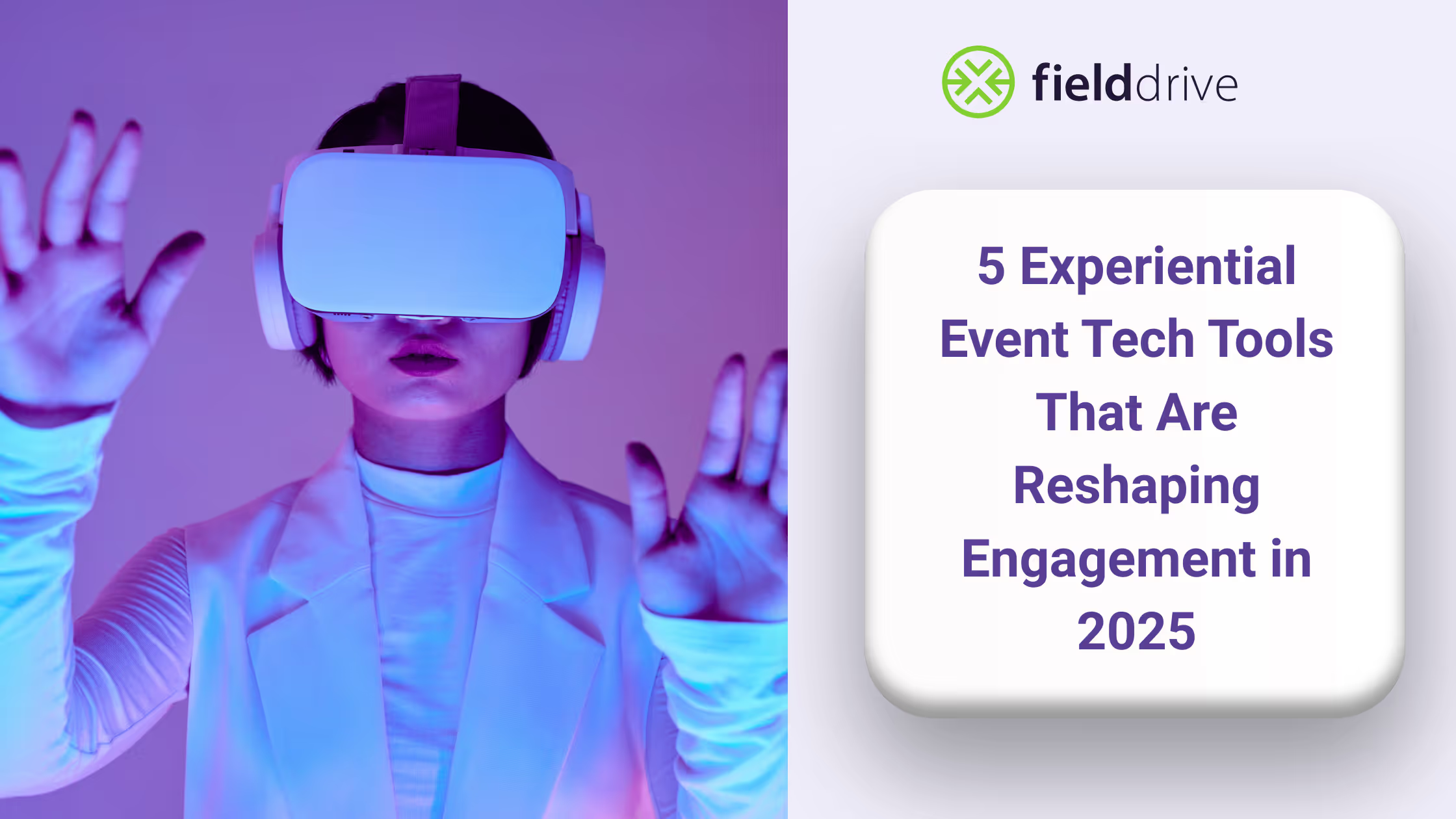5 Experiential Event Tech Tools That Are Reshaping Engagement in 2025
Discover 5 cutting-edge event tech tools that are transforming attendee engagement and driving immersive, experiential events in 2025.

CONTENT
In 2025, attendees have evolved. They're no longer attending events just for the keynotes or the swag. No, they're showing up for the experience. They don’t want the standard, cookie-cutter affairs anymore. Instead, attendees these days gravitate towards events that feel personal, connected, and, most of all, worth their time.
That's why event organizers must now focus on experiential events.
What's that, you ask?
Experiential events are a new format where every touchpoint across an event is intentional, interactive, and designed to make attendees feel something.
Whether it’s immersive check-ins, curated networking, or personalized journeys, experiential events are all about connection, creativity, and impact.
But delivering that kind of experience at scale can be a tall order. Thankfully, recent innovations in event tech have made it much easier to host such experience-oriented events.
So, in this blog post, we will take a look at the top event tech solutions that are making experiential events a reality.
Let's dive in!

1. AI-Powered Matchmaking That Feels Natural
A lot of events promise smooth and high-value networking. But in practice, networking during events is often very awkward.
That is mostly because it's impossible to gauge a possible connection's value simply by looking at people's job titles. This leads to two people sitting across a table from one another who have nothing in common except for their job titles.
As we said, AWKWARD!
AI matchmaking tools for events are addressing this issue head-on!
Platforms such as Grip and Zenvia help attendees find relevant connections based on interests, behaviors, and real-time data.
These intelligent recommendations make networking feel effortless, helping attendees walk away with meaningful conversations and more value from the event.
2. Facial Recognition Check-in Kiosks
The age-old adage that the first impression is the last impression is nowhere truer than in the events industry. What attendees see and experience when they first walk into your event venue will be branded on their brains for the rest of the event and even beyond, influencing their opinion about everything that comes after the entry points.
That's a lot of pressure, isn't it?
That’s why events are moving away from standard check-in desks and embracing smarter, faster alternatives like facial recognition check-in kiosks. Platforms like fielddrive offer facial-recognition-enabled check-in kiosks that provide touchless and fast check-in and badging experiences that WOW the attendees while also making the entry points seamless.

3. Gamified Interaction That Drives Exploration
Gamification has evolved. In 2025, gamification in events is about driving smarter attendee behavior and not just handing out points. Platforms like Klik and Zuddl help create interactive challenges tied to booths, sessions, and networking, turning engagement into something trackable and fun.
By integrating these tools, organizers increase attendee movement, boost sponsor visibility, and encourage deeper involvement with the event. It’s a core part of any strategy focused on attendee engagement and ROI-driven experiences.

4. Spatial Audio for Smart Breakout Zones
As events get larger and crowds get bigger, so does the noise.
Stand in the middle of a show floor during peak traffic hours and you'll see what we mean.
This cacophony can be very immersion-breaking. That's why spatial audio event solutions like Holoplot and Silent Conference are seeing a massive surge in popularity. These tools are helping organizers create quieter zones without needing physical walls. They allow for sound to be directed precisely, creating personal audio bubbles around attendees.
This makes content delivery in crowded environments feel thoughtful, tailored, and most importantly of all, more effective, which is a key factor in building immersive event experiences that respect attendee focus and attention.
5. Real-Time Sentiment Analysis and Mapping
At one time or another, we've all said the words: "I know how you feel..."
And if you're anything like us, then more often than not... you don't really know how they feel. Not for lack of trying but because it's difficult to get inside somebody's head and gauge what they're thinking or how they're feeling without some concrete data points.
That's the same issue that plagues many event organizers. Saying that we understand our attendees and actually understanding the attendees are very different things.
Luckily, with event sentiment tracking tools from platforms like Touchcast and Zenus, you don't have to rely on guesswork anymore. Event organizers can now capture live audience mood using facial recognition, passive feedback, and engagement metrics.
This data allows for on-the-fly adjustments to music, lighting, or pacing, making the entire experience feel more dynamic and attendee-driven. It’s one of the most exciting innovations in event technology 2025.
Conclusion
The best event technologies in 2025 do more than streamline logistics. They elevate the entire experience. From AI-powered networking to immersive check-ins and smart analytics, this new generation of tools is helping organizers meet rising expectations and build events that feel more personal, responsive, and unforgettable.
As attendee expectations grow, the question for planners isn’t “should we use tech?” It’s “are we using the right tech to deliver the experience they came for?”
Want to learn how fielddrive can help you elevate your events?
Book a call with our experts today



.png)
.svg)
.svg)
.svg)

.svg)